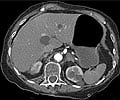Among the young population India accounts for almost one fifth of deaths occurring globally due to heart diseases.

Currently, India has one of the highest burdens of acute coronary syndrome and ST elevation myocardial infarction. It is one of the highest anywhere in the world, explains Dr. Ajay Kaul, Chairman, Cardiac Sciences, Fortis.
It is ironic that most of the patients in the Indian population, almost 50 per cent of them are vegetarian yet their incidence of coronary artery disease is much higher than non- vegetarian Western population, he says.
Dr. Suraj Narasiman, Consultant-Interventional Cardiologist and Structural Intervention Specialist, Manipal Hospital Sarjapur, says "Usually, teenagers who are smokers or drug abused or suffering from heart attack are more prone to cardiovascular deaths."
‘The worldwide risk of cardiovascular diseases and deaths is 235 per one lakh population but in India the number is alarming at 272 which is very high as compared to any country in the world.’





Advertisement
Teen Smokers Show Early Signs of Heart Disease
"According to the reports of the previous years, CVD is considered as one of the main reasons behind teenager’s death. Hence, in order to prevent the increasing risk, the youngster needs to quit smoking, if diabetic or dealing with hypertension should check that on a regular basis, leading a healthy lifestyle, following a regular exercise schedule, and avoiding junk foods.Before any excessive exhaustion, they need to consult an expert in regards to understanding the intensity of exercise they can proceed with. Also, those with a family history of cardiac issues are prone to the risk factors, and need to be on regular check-ups for healthy living," he says.
Dr. Kaul explains that the Body Mass Index of urban Indians is higher, approximately 24-25 as compared to rural propagation of BMI of 20. The more concern is regarding abdominal obesity, which is the commonest form of obesity in India. Waist to hip ratio in an urban setting is as high as .99. Versus 9.4 in a rural area. Abdominal obesity is more prevalent than generalised obesity, and this is a known risk factor for cardiovascular events.
In Asian Indians, there is a unique pattern of dyslipidemia, HDL levels are very low and they have very high triglyceride levels and low-density lipids. According to an ICMR study, it has been shown that this is the reason for a very high level of coronary artery disease and cardiovascular events in the Indian population at a young age, he says.
Advertisement
Diet and Heart Disease Risk
"Indians consume a very high quantity of carbohydrate diet. An average Indian consumes more carbohydrates, high-fat, dairy products, butter, ghee, and cheese in their everyday meal which has all increased the incidence of coronary artery disease," Dr. Kaul explains.Reusing oil isn’t uncommon in Indian culture in cooking and this leads to more consumption of trans fats, which is also very dangerous and is the main reason for the increase in coronary cardiovascular diseases, he underlines.
Dr. Gopi A, Director - Interventional Cardiology, Fortis Hospital, Cunningham Road, Bangalore explains that the incidence of cardiovascular disease among youngsters is quite significant, especially in this part of the world.
"There are multiple reasons ascribed to this such as genetic factors, families with a history of premature cardiovascular disease - those family members are definitely at a higher risk from a young age.
Lifestyle changes are a major factor that affect heart health among youth. A significant amount of smoking, sedentary lifestyle, obesity are other contributing factors. In addition, in our country, diabetes is very common and has started occurring in people at a much younger age. Diabetes also has a significant amount of contribution to the incidence of coronary artery disease in the Indian population," he says.
The annual number of deaths from CVD in India has risen from 2.26 million (1990) to 4.77 million (2020). Coronary heart disease prevalence rates in India have been estimated over the past several decades and have ranged from 1.6 percent to 7.4 percent in rural populations and from 1 percent to 13.2 percent in urban populations.
SRL Diagnostics, India’s leading chain of diagnostic laboratories conducted a retrospective data study on close to 3, 00,000 samples tested in Bengaluru for lipid profile in the last five year period.
Advertisement
Cholesterol Study Findings
Some of the findings from the data study showed that 19 percent of the samples tested for Total Cholesterol tested borderline high and over 7 percent samples tested high.HDL Cholesterol which is considered agood cholesterol’ was found to be sub-optimal in over 48 percent of samples; 18 percent of the samples tested for Triglycerides tested borderline high and over 18 percent samples tested high.
LDL Cholesterol was optimal in 38 percent of the samples, above optimal in 30 percent, borderline high in 21 percent and much higher in 11 percent of the samples. 31 percent of the samples had abnormal levels of VLDL Cholesterol.
Commenting on the study, Dr. Chaitra Krishnagiri, Technical Lead, South and Chief of Laboratory, SRL Diagnostics, Bengaluru said, "Individuals at risk of CVD may demonstrate raised blood pressure, glucose, and lipids as well as overweight and obesity. Identifying those at highest risk of CVDs and ensuring they receive appropriate treatment can prevent premature deaths.
In the last few years, we have seen that people are more aware and are taking preventive measures; especially those who are in their most productive age-group. We hope that this trend of screening continues and we gradually see lipid profiles improving in at-risk individuals."
Out of the total 4,000 asymptomatic people who underwent screening for heart calcium score in the last 12 months at NURA, about 1 in 5 (20 percent) were found with build-up of calcified plaque in their heart. Out of these, around 150 people (4 percent) had a 90 percent chance of heart attack, with an Agatston score of over 400, but were completely unaware of it. They were saved in the nick of time as their condition could be diagnosed with preventive health check-up.
Explaining this, Dr. Tausif Ahmed Thangalvadi, Medical Director at NURA, a collaboration between Fujifilm Healthcare and Dr. Kutty’s Healthcare in Bengaluru stated, "A coronary calcium scan can detect and measure calcium-containing plaque in the arteries.
This plaque can grow and lead to narrowing of coronary arteries and increased risk of heart attack. Plaque in arteries is more common in men than women, and its incidence increases with age.
Heart Calcium score uses low-dose CT scan to take cross-sections of the blood vessels of the heart to look for build-up of calcified plaques made of fats, cholesterol, calcium and other substances in the blood.
This calcium is different from the calcium in the bones and is not related to calcium in our diet. The Heart Calcium Score helps us identify a person at risk of a heart attack even before signs and symptoms develop. At Nura, we use the internationally validated Agatston Score to predict severity of the plaque deposits."
Source-IANS















